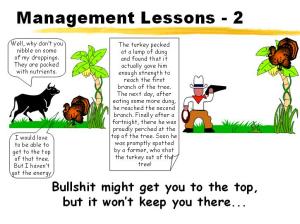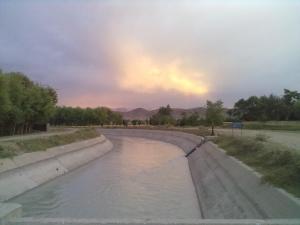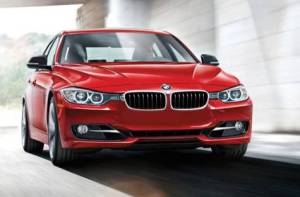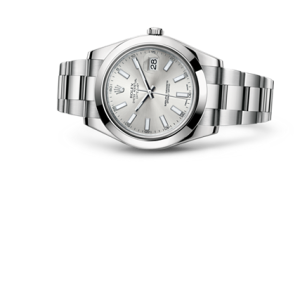Butt admits to fixing, apologises
June 29, 2013
Salman Butt
The banned former Pakistan captain, has publicly admitted to his part in spot-fixing for the first time and issued an apology. He has also indicated his willingness to participate in PCB and ICC rehabilitation programmes and said he still retains ambitions of returning to international cricket.
Butt was given a five-year ban, with another five suspended, from all cricket by the ICC for his part in a scam during the Lord’s Test in August 2010. He also served time in prison in England.
In April, Butt and his former team-mate Mohammad Asif lost their appeals to the Court of Arbitration for Sport for the suspensions to be reduced and Dave Richardson, the ICC’s chief executive, called on them to admit their wrongdoing and cooperate with the ICC’s anti-corruption and security unit (ACSU).
“I admit the decision of the ICC tribunal,” Butt said in a brief statement to the media in Lahore. “I said it before and am saying again, that to all those who have been disappointed by my actions I do apologies for them. Also, the [negative] effect it had on cricket’s integrity, I would like to apologies for that.
“I want to insist, to all those playing and wanting to play cricket, they must stay away from such wrongdoings because it negatively effects them and the game of cricket.”
There will be no immediate implication in the wake of the apology. Butt will have to serve the five-year ban, compulsory under the ACSU code. The remaining five years of his 10-year ban is suspended. After the apology he has to start rehabilitation. In addition to doing that, he has to tell the whole truth to the ACSU and PCB. If he can do all that then he could resume playing, provided he has satisfied ACSU and agrees to further monitoring.
Butt also made another request for a softening of his ICC ban, so that he could play domestic cricket before a possible return for Pakistan. Zaka Asraf, the currently suspended PCB chairman, had previously indicated that there could be a route back for Butt and Asif, once their suspensions had been lifted.
“I want to give my availability for any PCB rehab programme and from the ICC,” Butt said. “Since I have only two years left of my ban, I request the ICC to allows me to play in domestic cricket. So by the time my ban ends, I can be available for national selection.”
Mohammad Amir, the third Pakistan player found guilty of conspiring to bowl deliberate no-balls at Lord’s, also served a custodial sentence in England and received a five-year ban from the ICC. The PCB’s interim chairman, Najam Sethi, said earlier in the week that he would request that the ICC consider reducing the suspension. Amir is still only 21, while Butt is 28 and Asif 30.
BP Challenges Settlements in Gulf Oil Spill
June 29, 2013
BP is placing full-page advertisements in three of the nation’s largest newspapers on Wednesday as the company mounts an aggressive campaign to challenge what could be billions of dollars in settlement payouts to businesses after its 2010 oil spill in the Gulf of Mexico.
The ad, scheduled to be published in The New York Times, The Wall Street Journal and The Washington Post, accuses “trial lawyers and some politicians” of encouraging Gulf Coast businesses to submit thousands of claims for inflated or nonexistent losses.
“Whatever you think about BP, we can all agree that it’s wrong for anyone to take money they don’t deserve,” the ad says. “And it’s unfair to everyone in the Gulf — commercial fishermen, restaurant and hotel owners, and all the other hard-working people who’ve filed legitimate claims for real losses.”
In April, Judge Carl J. Barbier of Federal District Court for the Eastern District of Louisiana upheld a court-appointed claims administrator’s interpretation of the multibillion-dollar settlement it reached with a group of lawyers for plaintiffs.
The oil company, based in London, appealed the decision. A three-judge panel from the Fifth Federal Circuit Court of Appeals in New Orleans is scheduled to hear the case on July 8.
BP’s ad claims Judge Barbier’s ruling “interprets the settlement in a way no one intended” and results in settlement payouts to businesses that did not suffer any spill-related losses.
“Even though we’re appealing the misinterpretation of the agreement, we want you to know that the litigation over this issue has not in any way changed our commitment to the Gulf,” it says.
Geoff Morrell, BP spokesman, said the ad was consistent with the company’s effort to keep the public informed of its economic and environmental restoration efforts.
Plaintiffs’ lawyers claim BP simply undervalued the cost of settlement.
Walking tall in Tokyo
June 28, 2013
Fashion, football, sushi bars and tech-savvy geisha girls at one of the world’s trendiest capitals make Kelly Clarke feel just a wee bit overwhelmed — despite the advantage of height
Forming a human wall, with their arms tightly intertwined together, uniformed police, armed with whistles and megaphones, bellow out “Iku Iku” from the curbs-edge and as the crowds swarm towards each other, the visuals mimic that of a battle scene from the war film Braveheart.
With vehicles halted in all directions and the green man flashing, faces from the north, south, east and west scramble onto the road’s intersection in a bid to make it to the other side.
UAE becomes largest operations base for Total in the Middle East
June 28, 2013
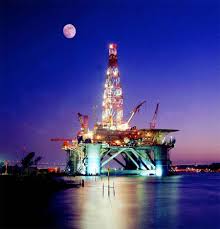
Abu Dhabi: The UAE has emerged as the largest operations base for Total of France in the Middle East. Total is one of the world’s largest oil firms and it is involved in 8 hydrocarbon ventures in the UAE with equity production of 248,000 b/day.
“We are most active in the UAE, where we are present in exploration and production [E&P, LNG], petrochemicals and solar power,” the company said in a report.
“Our annual investment in exploration has increased, from $1.5 billion to $2.8 billion….we expect 3 per cent production growth overall between 2011 and 2015 to reach 3 mbpd by 2017… 90 per cent of 2017 potential is already in production or being developed,” the company said.
The report showed Total’s average Middle East production is around 550,000 b/d in 2013, or 25 per cent of the company’s total global production.
“The Middle East is one of six global regions in the Total portfolio and our E&P operations in the region have 1,500 employees. When we talk of the Middle East, we refer to the Gulf states, Yemen, Lebanon, Jordan, Iran, Iraq and Syria; Egypt falls outside and we have no production at this time in Iran.”
Total said it remained strongly committed to health, safety and the environment, noting that it works to assess and minimise risks, to mitigate incidents when they occur.
Anniversary
“We are also heavily integrated in Qatar, with operations spanning E&P, LNG, refining and petrochemicals; in fact, we just signed an agreement on April 21 to expand operations at the Ras Laffan refinery of Qatar…we have been present in Qatar for 76 years,” said the company.
“We have been active in the UAE since 1939… our 75th anniversary coincides with the renewal of the Adco licence in 2014. We are partners in eight ventures including the offshore oil and gas development Total Abu Al Bukhoosh [where we produce 0.5 billion cubic feet of gas per day on behalf of Adnoc and 10,000 b/d of crude; we have a 75 per cent shareholding and are the field operator working with INPEX of Japan],” it said.
The third country for Total in the region is Yemen, where it is present in oil production and LNG and recently marked 26 years of operations.
In Oman, Total has equity in projects of the state oil producer Petroleum Development Oman (PDO), Oman LNG, and there are other projects in the pipeline. The company said it is has representative offices in Saudi Arabia, Iran and Kuwait and it is also operating in Syria and in the downstream sector in Jordan and Lebanon.
The company said Total ABK is the first field in the world where Total has used full field gas-lift technology, adding that it is also an example of exceptionally high recovery rates on the oil side (50 per cent+ from some reservoirs).
“This capability in mature field development is an important consideration as we look to continue our partnership with Abu Dhabi in the future.”
Flagship projects
It said Total has a 9.5 per cent stake in Adco, and 13.3 stake in the ADMA-OPCO company whose offshore licence comes up for renewal in 2018 along with the licence for Total ABK.
It is also partners in Gasco, a venture extracting added value from Abu Dhabi’s condensates production, noting that its relationship with Gasco was extended for 30 years three years ago.
“We are also partners in Adgas, the first LNG project in the region, on Das Island. The role of Adgas will inevitably evolve now that Abu Dhabi is a net importer of natural gas, chiefly for field reinjection,” the company said.
It said other flagship projects in the UAE include Dolphin Energy; the Taweelah electricity and desalinated water plant; the fertiliser production complex Fertil; and the recently inaugurated Shams 1, the largest CSP plant in operation in the world.
Turning to its worldwide operations, Total said it holds around 11.4 billion barrels of proven hydrocarbon reserves, or 1P reserves.
Jebel Hafeet
June 28, 2013
Scientists say UAE’s tallest mountain is teeming with hundreds of species.
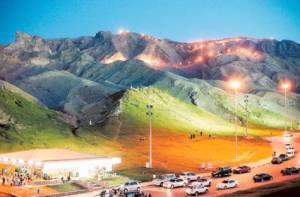
Al Ain: Unique species of insects have been found on Jebel Hafeet, one of the two highest mountains in UAE, and in its surrounding Wadis. They “may be… new to science”, says the Environment Agency — Abu Dhabi (EAD).
The discovery has been made through a hi-tech programme initiated by the EAD to monitor the wildlife in the area. The programme has successfully documented hundreds of species of animals, insects, birds, reptiles and plants — many of them endangered.
“We have recorded … unique species of insects such as the sand cockroach and minute moss beetle which may be species new to science,” said Dr Shaikha Salem Al Daheri, Executive Director of Terrestrial and Marine Biodiversity at the EAD. The insects have been found in the Wadi Tarabat — a Valley in the foothills of Jebel Hafeet.
The mountain, said Dr Shaikha, is also home to the rare Persian horned viper (Pseudocerastesp. persicus). This snake is found only in the mountainous parts of the emirates and neighbouring Oman at an altitude of 600 metres and above. “There are a few records of this species from Jebel Hafeet and is a very rare snake and only found at high altitude.
Nature always wears the colors of the spirit.
June 28, 2013
BMW Active Hybrid 3
June 27, 2013
Is it possible to have an “ultimate driving machine” that is reasonably fuel-efficient.
New York: BMW’s gas-electric hybrid 3-Series sedan answers a question that few BMW owners or aspirants have asked:
Is it possible to have an “ultimate driving machine” that is reasonably fuel-efficient and inoffensive to environmental concerns?
The 2013 BMW Active Hybrid 3 driven for this week’s column replies: “Yes, but . . . . “
Yes, it is possible. But you’ll have to drive it a very long time – 62 years by one industry estimate – to recoup the Active Hybrid 3’s price premium compared with the cost of a less expensive 3-Series model such as a gasoline-fueled BMW 328i, which starts at $36,850.
By comparison, the Active Hybrid 3 begins at an eye-popping $49,650.
Yes, you can get better fuel economy in a high-performance entry-level luxury car with no diminution of legendary BMW prowess. But if it’s fuel economy you mostly want, you don’t want a BMW.
The Active Hybrid 3 is a marvel of engineering and design – a stunningly beautiful car to drive . . . and in which to arrive. Equipped with a 3-liter in-line six-cylinder engine and a lithium-ion-powered electric motor (combined 335 horsepower, 330 pound-feet of torque), the rear-wheel-drive car moves 0 to 60 mph in 5.3 seconds.
That’s fast by the standards of most drivers. It certainly falls within the realm of BMW owners’ expectations.
But “fuel economy”? We should parse terms.
The 2013 BMW Active Hybrid 3 is “fuel-efficient,” especially for a BMW. That means it does a surprising amount of work – delivers a commendable amount of power – per unit of energy consumed. It gets 25 miles per gallon in the city and 33 on the highway.
That’s something for a BMW.
But there is nothing economical about it.
The Active Hybrid 3 requires more expensive premium gasoline. You can try to scoot by with 89-octane fuel. But you do so at the car’s risk. For best performance, you should use the higher and more costly 93 octane.
BMW’s marketers boast that the Active Hybrid 3 is “the world’s first full hybrid among compact sedans in the premium segment.” But when marketers use that many adjectives, they really are trying to avoid saying something else. To wit:
The world’s first full gas-electric hybrid, the Toyota Prius, runs rings around the BMW Active Hybrid 3 in the arena of fuel economy. It gets nearly 50 miles per gallon in combined city-highway driving, and it drinks regular-grade fuel. Numerous other affordable gas-electric hybrids and extended-range electric vehicles, such as the Chevrolet Volt and Ford Fusion Energi, also beat the Active Hybrid 3 in fuel economy.
But they have one big problem: None of them is a BMW.
Scoff if you must, but that BMW badge has an intrinsic value that few rivals can match. That means something. Lesser-prestige manufacturers can innovate, improve and decidedly advance alternative propulsion technologies, such as electrification.
But BMW’s now wholehearted entry into that business probably means that electrified vehicles, of one sort or another, are here to stay. And BMW did not plug into the gas-electric-hybrid segment as a matter of corporate hubris, a kind of technical showing off.
As is the case with all of its competitors, BMW is under government pressure, here and abroad, to produce cleaner, more fuel-efficient automobiles. The company has enthusiastically taken up the challenge, as evidenced by its Active Hybrid 3.
Think about the possibility: BMW, maker of gasoline- and diesel-powered “ultimate driving machines,” producing an array of alternative-propulsion cars that run equally well under the same marketing rubric.
Federer Takes the Biggest Fall
June 27, 2013
WIMBLEDON, England — The carnage began early Wednesday at Wimbledon. Fifteen minutes into the first match on Court 3, the top-seeded American man, No. 18 John Isner, retired from his match against Adrian Mannarino with a left knee injury.
Related
Federer’s loss to the 116th-ranked Stakhovsky ended his streak of reaching 36 consecutive Grand Slam quarterfinals.
By lunch, women’s No. 2 Victoria Azarenka and Steve Darcis, who upset Rafael Nadal in the first round Monday, had withdrawn because of injuries.
At tea, a knee injury had forced No. 6 seed Jo-Wilfried Tsonga to quit his match after three sets, and third-seeded Maria Sharapova and ninth-seeded Caroline Wozniacki had lost to qualifiers after slipping on court and requiring medical treatment.
At dinner, after seven singles players had retired or withdrawn with injuries, the All England Club issued an extraordinary statement defending the state of its grass.
And as the sun was setting to bring one of the strangest days in Wimbledon history to an end, the most unusual sight of all occurred at Centre Court: Roger Federer walking off as a second-round loser.
The 116th-ranked Sergiy Stakhovsky of Ukraine used old-school serve-and-volley tactics to send the latest shock through Wimbledon, ending Federer’s remarkable streak of reaching 36 consecutive Grand Slam quarterfinals with a 6-7 (5), 7-6 (5), 7-5, 7-6 (5) victory.
Though nearing his 32nd birthday and having won only one tournament this year, Federer had made a home at Wimbledon, winning the title seven times. He had not lost before the quarterfinals at Wimbledon since falling in the first round to Mario Ancic in 2002. He had not lost before the quarterfinals at any Grand Slam event since he lost in the third round of the 2004 French Open to Gustavo Kuerten.
“Can’t have ‘em all,” a subdued Federer said after the match.
When Wednesday began, Federer’s biggest problem was his shoes. The All England Club had asked him to change them, saying the orange-soled ones he wore during the first round violated the club’s dress code calling for predominantly white attire.
But no one was talking about shoes after Stakhovsky’s throwback performance, which he described afterward as “magic.” Stakhovsky went to the net 96 times, winning 64 percent of his points there, and had 17 aces and 72 winners.
“He was uncomfortable to play against,” said Federer, a 17-time Grand Slam champion. “I think he served and volleyed really well. It was difficult to get into that much rhythm clearly against a player like that.”
After no breaks of serve in the first two sets, Stakhovsky turned the match by winning the second-set tiebreaker on a crisp serve-and-volley combination. He scored the first break of the match at 5-5 in the third set with a lunging forehand stab volley, then served out the set. He may have had the upper hand on Federer, but Stakhovsky knew there were other forces at work.
“You’re playing the guy and then you’re playing his legend, which is following him because he won it seven times,” Stakhovsky said. “He’s holding all possible career records here, I think, winning matches and everything. You’re playing two of them.
“When you’re beating one, you still have the other one who is pressing you. You’re saying: ‘Am I about to beat him? Is it possible?’ ”
Stakhovsky said he did not believe he could win until he was up a break in the fourth set and held serve at 2-1 after being behind by 15-40. Federer was only 1 of 8 on break-point opportunities in the match.
“I struggled maybe on the big points, you know, this time around again, like I have for some time this season,” Federer said.
Since winning Wimbledon last year, Federer lost in the quarterfinals at the United States Open, the semifinals at the Australian Open and the quarterfinals at the French Open. But he refused to write an epitaph on his career.
“I still have plans to play for many more years to come,” he said. “It’s normal that after all of a sudden losing early after being in the quarters 36 times, people feel it’s different.”


